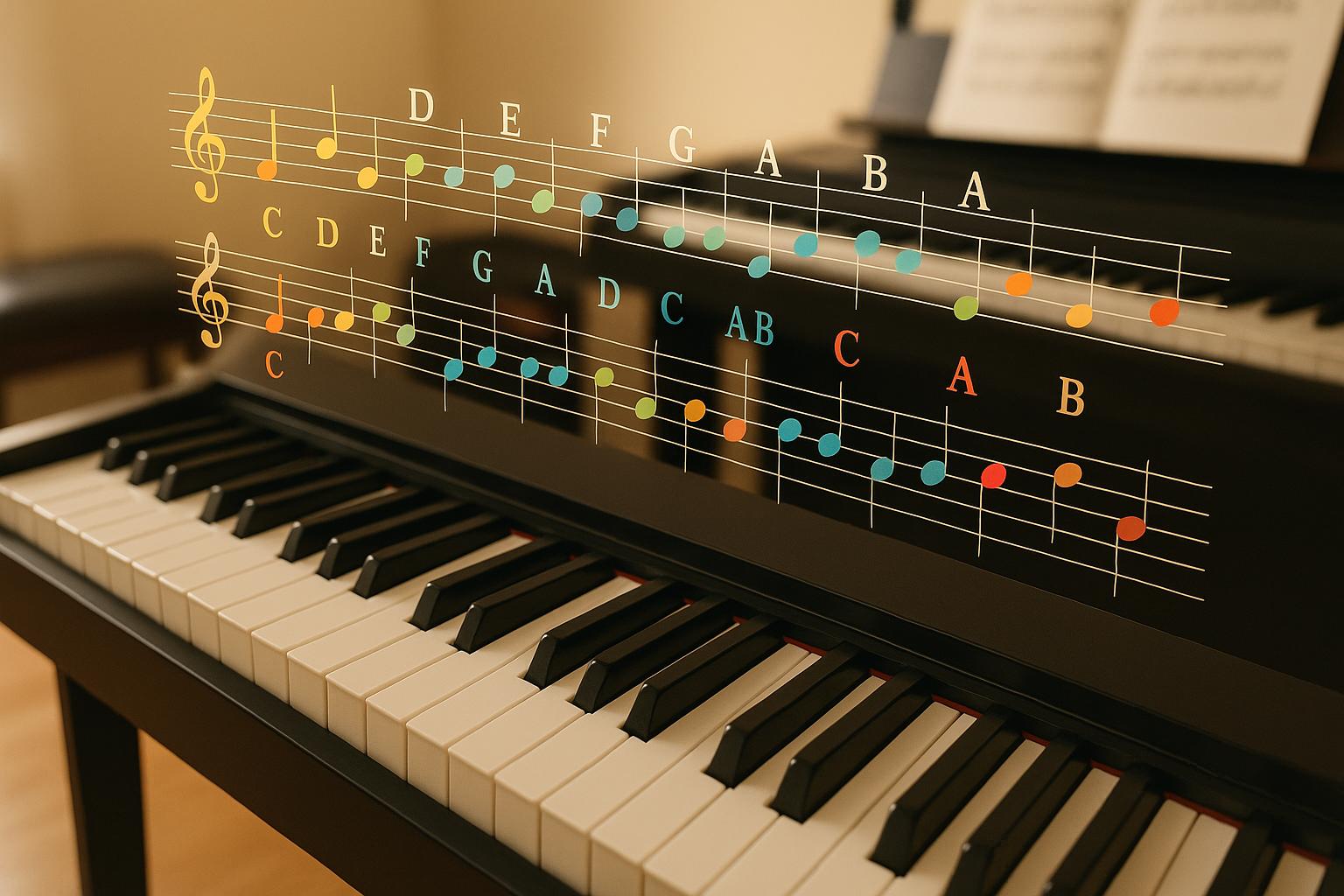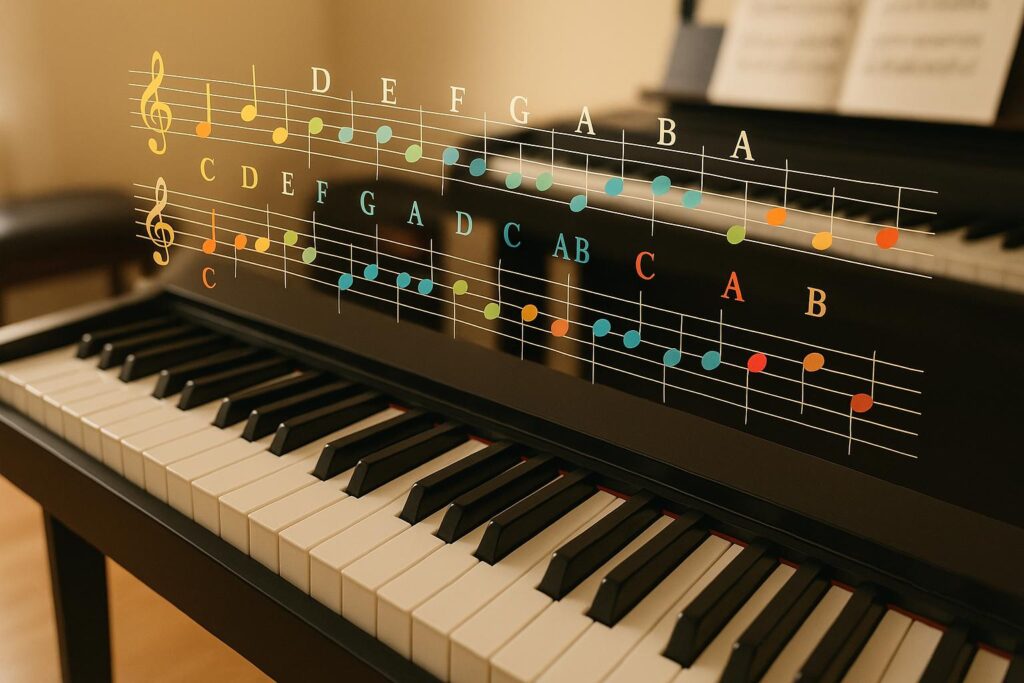
Learning the piano can often feel like an uphill battle, especially when tackling all 12 major scales. For many beginners and even seasoned players, scales often come across as a tedious chore rather than a foundational skill. However, as this video brilliantly demonstrates, mastering scales doesn’t have to be daunting. With the right tools and structured practice, you can transform these essential building blocks into a source of confidence and musical fluency.
This article breaks down key insights from the video, offering actionable steps and illuminating the significance of understanding scales, chords, and theory. Whether you’re a beginner pianist or an experienced musician looking to sharpen your theoretical knowledge, this guide has something to offer.
Why Understanding Scales is a Game-Changer
At its core, music is built on patterns, and scales are the roadmap to navigating those patterns. Understanding scales unlocks countless possibilities:
- Improved Playing Ability: Knowing scales enhances your finger strength, dexterity, and awareness of key signatures.
- Music Composition: Scales serve as the foundation for creating melodies, harmonies, and accompaniments.
- Better Improvisation: For jazz, blues, or any genre, understanding scales allows you to experiment freely.
Yet, how can one learn all 12 major scales efficiently without feeling overwhelmed? The video offers an innovative, practical solution.
The Step-by-Step Approach to Mastering Scales
1. Learn the Basics of a Major Scale
Every major scale follows the same pattern of whole and half steps: W-W-H-W-W-W-H. This means you can apply the formula to any starting note. For instance, the C major scale (C-D-E-F-G-A-B-C) adheres to this pattern, making it a great starting point for beginners.
Once you grasp the formula, you can replicate it across any key. The video emphasizes how recognizing these patterns simplifies learning even the more intimidating scales, like F# or B major.
2. Visual and Auditory Learning Combined
One of the standout features highlighted in the video is the integration of visual and auditory learning. When practicing scales on the piano, it’s essential to:
- See the Pattern: Observe the keyboard layout and note the distribution of black and white keys for each scale.
- Hear the Tone: Listen to how the scale sounds, recognizing its unique character and "mood."
In the example of F#, the speaker demystifies its complexity by breaking it down: F# includes all the black notes and just two white ones (B and E#). By combining sight and sound, learners can gain a deeper and more intuitive understanding of each scale.
3. Practice Through Trial and Error
The video underscores the importance of interactive exercises, simulating a "flashcard" system for scales and chords. This method involves:
- Attempting to play a given scale or chord.
- Using feedback to identify errors, like hitting the wrong notes.
- Reflecting on correct answers provided by the tool or app to reinforce accuracy.
For example, if prompted to play F major and you press the wrong notes, you can immediately correct yourself by revealing the correct answer. This iterative feedback loop ensures that you’re not just memorizing but fully internalizing the material.
4. Dive Into Diatonic Chords
Beyond scales, the video delves into diatonic chords, which are the harmonies naturally derived from a scale. In any major scale:
- The 1st, 4th, and 5th chords are major.
- The 2nd, 3rd, and 6th chords are minor.
- The 7th chord is diminished.
For example, in the key of C:
- Major chords: C, F, G
- Minor chords: Dm, Em, Am
- Diminished chord: Bdim
Grasping these chord relationships allows players to understand why certain chords work together in a song and how to construct progressions in any key.
5. Build a Consistent Practice Routine
The video emphasizes the importance of repetition and daily practice. Spending just a few hours a week focused on scales, chords, and theory creates a strong foundation for more advanced techniques. Some suggested routines include:
- Playing each major scale hands separately, then together, for 5-10 minutes per day.
- Practicing scales with a metronome to develop rhythm and precision.
- Exploring diatonic chords in every key, one key per week.
The Role of Theory in Musical Creativity
While many musicians rely on instinct or "feel", the speaker in the video passionately advocates for a solid grounding in theory. Theory enables players to:
- Understand the "why" behind the music they play.
- Write original music with intentionality and purpose.
- Communicate clearly with other musicians using a shared language.
As the speaker notes, theory is essential for breaking free from trial-and-error methods and elevating your musical expression.
Practical Applications for Beginners and Experienced Pianists
One of the most valuable takeaways is the versatility of this learning method. Whether you’re just starting out or have years of experience, the step-by-step scale mastery process can:
- Boost confidence for beginners who feel intimidated by theory or complex scales.
- Sharpen fundamentals for advanced players, improving improvisation and composition skills.
- Provide structure for self-taught musicians seeking a clear learning path.
Additionally, the video’s accessible approach makes it ideal for family learning environments, where parents and children can practice together.
Key Takeaways
- Mastering all 12 major scales is achievable through a clear, structured approach.
- Combine visual and auditory learning to deepen scale recognition and understanding.
- Use interactive tools or exercises to identify mistakes and reinforce accuracy.
- Understand diatonic chords in every key to build harmonic knowledge.
- Consistency is key: Regular practice ensures steady progress.
- Theory empowers creativity, allowing musicians to compose, improvise, and perform with confidence.
Conclusion
Learning the 12 major piano scales is far more than a technical exercise – it’s the gateway to unlocking the full potential of your musical journey. By following the principles outlined in the video, you can demystify scales, master essential theory, and lay the groundwork for advanced playing. Whether you’re a beginner or an experienced pianist, dedicating time to scale mastery will enhance your understanding and enjoyment of music for years to come.
So, sit down at your piano, start with C major, and let the journey begin. Every scale is a step closer to musical freedom and creativity.
Source: "Master All 12 Major Scales Easily! 🎹 Piano Flashcards" – Phill C – AZexperiment, YouTube, Jan 1, 1970 – https://www.youtube.com/watch?v=N3qVJc8PXbw
Use: Embedded for reference. Brief quotes used for commentary/review.

